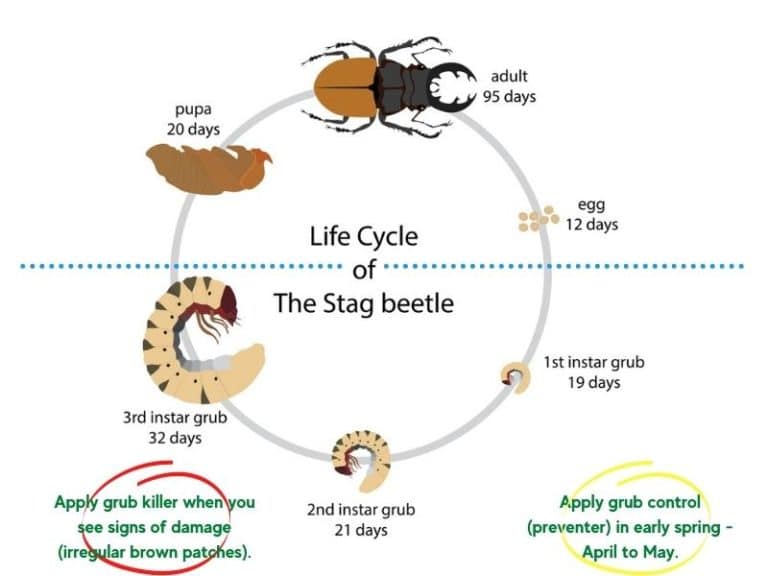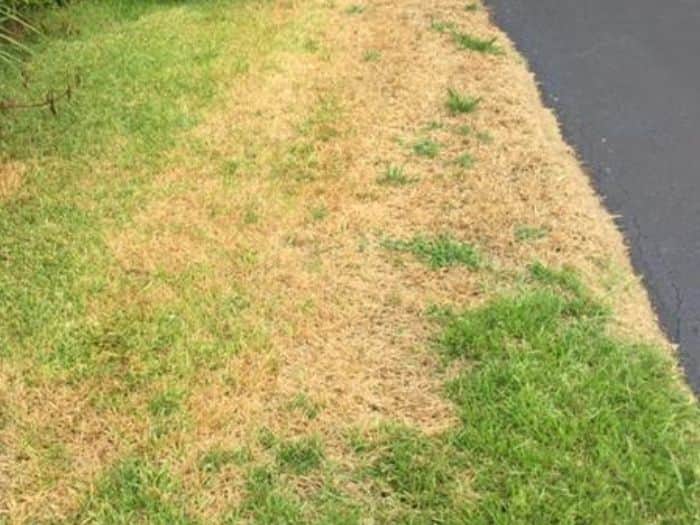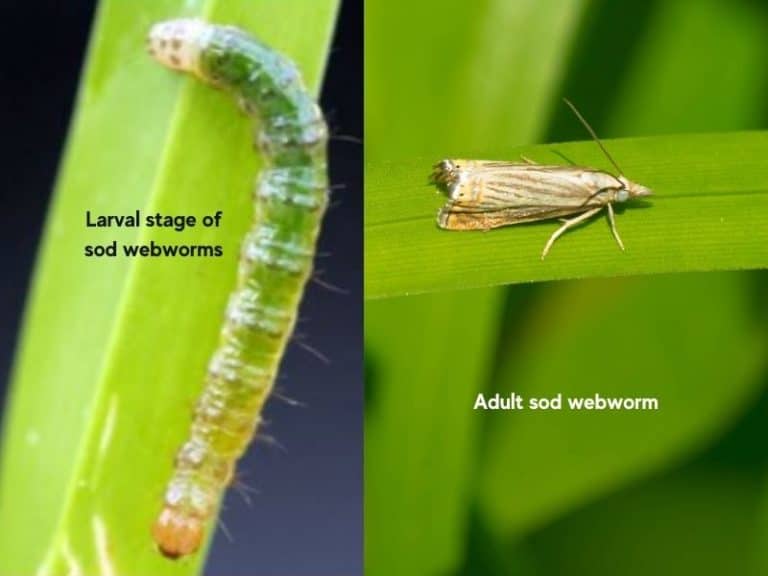Lawn Full of Flies: Causes + How to Get Rid of Flies in Grass
The presence of flies in your lawn is not only an eyesore, but also a sign that it’s susceptible to damage due to their feeding. Perhaps they’re attracted to your lawn because you didn’t lay or seed your soil properly. The first thing to do is observe the prevalence of the symptoms to determine if the flies are present, or if the problem arose due rot growth or unfavorable environment. Below is list of flies in lawns, how to identify them and the control methods for eliminating them.
Identifying the flies in your lawn
There are thousand species of flies that can invade your lawn regardless of your location and climate. Here are the most common ones:
White flies
Considering how invisible white flies are, it’s not easy noticing their presence until the turf gets damaged. These insects, also known as leafhoppers, are tiny and triangular-shaped. They don’t coexist in large numbers which makes it difficult to attract your attention.
Leafhopper adults and larvae suck on turf blades’ sap and cause them to turn yellow. Upon close examination of the blades, you’ll notice small white-yellow dots where they’ve sucked. The damages this fly causes are almost similar to dry weather damage or disease. If you see them in your lawn, chances are they’ve travelled from a nearby plant and your grass is part of the collateral damage.
Red flies
The Red Spider Mite (Tetranychus urticae) prefers breeding and living on the underside of the turf leaf. Since they’re spiders, you’ll most likely see webs over your lawn, trapping light necessary for photosynthesis. Also, they multiply quite fast and can cause a massive damage to your lawn if you don’t eliminate them at the right time.
Black flies
Black flies are small and black, with distinctive humpback thorax, almost resembling a buffalo’s back. Here are some common examples:
Frit flies
These are black and shiny insects measuring a length of 1/16 inch that attack bluegrass lawns, bentgrass golf gardens and other types of grasses. Its female adult lays eggs on grass, hatching maggots which is the most destructive stage. Once its eggs hatch into larvae during winter, it will feed on grass stems, causing deep patches in your lawn.
You’ll know you have frit flies if your lawn’s growth rate slows down, has yellowy patches, weak seedlings. Treating frit flies involves spraying the infested areas with pesticide containing chlopyforis as an active ingredient.
The Black Turfgrass Ataenius
Ataenius spretulus is a black shiny beetle whose larvae likes to feed on all types of grasses with rich organic matter. Their larvae destroy suck on turf’s juice from mid-to-late June to August, before they turn into pupa. When their population numbers are left uncontrolled, they can speed up turf’s death.
Green Flies
Some green flies like aphids can cause massive damage to your lawn when found in large numbers. They like to leave a sticky substance on grass, damaging it in the process. Signs of green flies include sticky grass, yellow-brown patches on grass, slow growth rate, and visible sightings of the green adult flies. Also, they are more common between March and September. To control their population, use insectoid predators like ladybirds or wasps.
Why is my lawn full of flies?
Many things could be attracting flies in your lawn like a trash bin with food leftovers. However, some flies could be targeting your grass because it’s a conducive breeding ground for them. Other reasons include:
- There could be stagnant water
Some flies prefer laying their eggs in standing water in buckets. Things like debris could also be holding water. If you have standing water or any other thing holding water in your lawn, it would be best if you empty it out or remove it.
- You have tall grass
Flies use tall grass as hideout places. While mowing may help keep them away, leaving the cut grass or leaves in your yard might also waste your efforts.
- Your lawn has strong odors
Both beneficial and non-beneficial insects get attracted to strong odors like rotten foods, uncovered compost bins, and pet feces. Unless you improve your lawn’s sanitation practices, the flies will keep coming back to devour on your grass and other leftovers.
How to get rid of flies in your lawn
Keeping flies at bay in your lawn depends on the type of flies infesting it. It also involves inspecting your lawn to determine where the flies live and breed. Once you establish these, it’s easy to tailor a suitable sanitation, exclusion, mechanical exclusion, biological or chemical control plan to get rid of them.
Biological control
Controlling flies in your lawn through biological solutions not only promotes your lawn’s wellbeing, but also keeps them at bay. They include:
Attract natural predators
Mammals like bats are predatory mammals that like to eat beetles, controlling their population. They mostly hide in trees under the loose and peeling barks. Some get attracted to herbs and flowers that invite nocturnal insects.
Like bats, birds like starlings and robins find the larvae of some insects appetizing. Some may go the extra mile of feeding on the adult flies when they lack maggots to devour on. To attract these predators for fly control, create a hummingbird feeder, bird’s nest or bat house. If there are spider nets lying around your fence, keep them intact as spiders also qualify as natural predators.
Spray your lawn with nematoid predators
Solutions containing predaceous nematodes (Steinernema feltiae) have powerful bacteria that work by eliminating the larvae of flies, disrupting their life cycle. These products are sensitive to light, which is why you should apply it on cloudy days. This fly control solution comes in handy when looking to kill the larvae of white, red and green flies.
Start by mixing one teaspoon of nematode powered to one gallon of water. Use a sprayer to apply the solution to the lawn immediately. There are high chances that the solution might not mix completely, which is why shaking it repeatedly is necessary. After the application, water your lawn for the next one week to ensure the nematodes don’t die.
Mechanical exclusion
Mechanical exclusion of flies involves using physical barriers or baits. Mechanical traps like air suction or electrical traps can also limit several types of lawn fly problems. You can acquire fly traps from hardware stores or some nurseries.
Alternatively, put sticky strips of fly paper on walls to trap insects with a habit of resting on vertical spaces. With mechanical methods, you don’t have to possess any skills and the cost is less. Like biological control, they won’t make you prone to side effects like chemical treatments.
Chemical control
Chemical treatment should only apply if biological, nematode treatments and bacterial solutions have failed to keep the flies under control. An insecticide works by killing insects on contact, preventing them from laying eggs that may hatch into destructive larvae. Before applying insecticide, ensure you read and follow all directions and precautions given on the label.
Keep your lawn clean
If poor sanitation is the reason flies are swarming your lawn, the first thing to do is get rid of the sources of food like pet droppings, moist garbage or uncovered compost pits. High sanitation practices prevent additional breeding of flies, though adults may still lurk around until they have nothing to eat.
While you might not have enough room in your home to store the garbage, how about ensuring it is covered. You may want to remove the yard garbage every four to five days during summer to prevent flies from breeding.
For some flies that love breeding in moist soils, overwatering your lawn can increase their population. Therefore, it’s advisable to water your lawn only when it’s dry. Also, remove any decomposing plant materials and clear the compost pit. This protects your lawn from fungal attacks due to insect droppings.


![How Do You Get Rid of Ants in Grass [Fixes that Work]](https://lawnmodel.com/wp-content/uploads/2020/10/How-to-get-rid-of-ants-in-grass-768x512.jpg)


